Tuberculosis (TB) Surveillance

Tuberculosis surveillance for a world health crisis
Tuberculosis (TB) surveillance is a vital step toward eradicating a disease that is the second leading infectious disease killer worldwide, behind COVID-19.1 Caused by bacteria in the Mycobacterium tuberculosis complex (MTBC), which includes Mycobacterium tuberculosis (Mtb), TB is a treatable disease but drug-resistant TB (DR-TB) remains a public health crisis and a health security threat.1 Genomic-based TB surveillance can support public health officials in:
- Detecting Mtb and non-TB species
- Characterizing anti-TB drug resistance
- Tracking the path of transmission
- Monitoring the evolution of the mycobacterium and novel mutations that are resistant to existing and new forms of treatment
The discriminatory power of next-generation sequencing enables outbreaks to be addressed with greater speed and confidence.
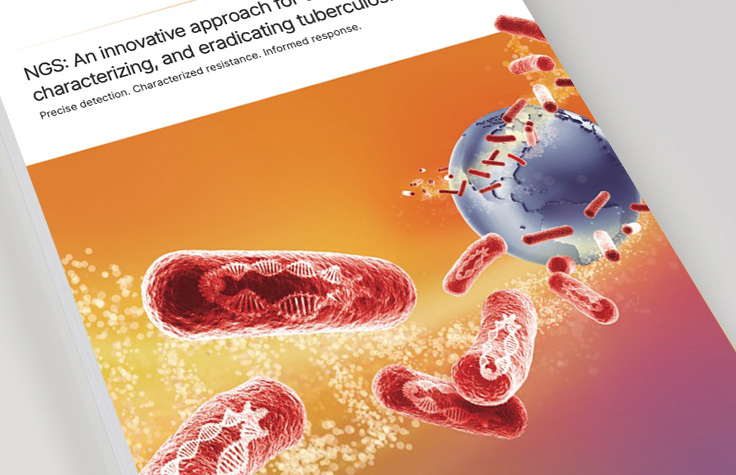
NGS: An innovative approach for detecting, characterizing, and eradicating tuberculosis
NGS is fueling the future of drug-resistant TB (DR-TB) research. This informative eBook outlines the global implications of DR-TB, details how NGS is being used to advance the WHO goal of ending TB, and overviews Illumina targeted and whole-genome sequencing workflows that can be applied to TB genomic investigations and research.
Download the eBook todayNGS advances DR-TB surveillance
DR-TB is an MTBC that is resistant to one or more anti-TB drugs and represents a significant challenge in controlling the pathogen’s diagnosis, treatment, and eradication.2 Detecting and characterizing these strains are a vital part of disease surveillance.
With its unique ability to broadly capture genetic regions associated with Mtb and anti-TB drug resistance, NGS is well-suited for advancing clinical research on tuberculosis. Insights obtained through NGS include:
- Accurate characterization of nucleotide-level genetic polymorphisms.3
- Detailed sequence information for multiple gene regions or whole genomes.3
- Detection of resistance to a wide range of first and second-line anti-tuberculosis drugs.3,4
- Differential detection of mycobacterial species with clinical relevance.4,5
- Genotyping and spoligotyping of MTBC strains.4
- Detection of mixed infection and heteroresistance down to 3% of subpopulations.4
Illumina is fully committed to supporting the World Health Organization’s (WHO) mission to end TB. This comprehensive infographic for World TB Day displays information about TB drugs, treatment, surveillance methods, and visualized TB statistics.

Transforming DR-TB detection with tNGS: Evidence, cost analysis, and implementation considerations
Discover the latest advancements in tuberculosis detection from global experts. This on-demand video series explores the economic, scientific, and policy implications of adopting next-generation sequencing in the fight against drug-resistant TB.
- Dr. Alice Zwirling, an expert in epidemiology and health economics, discusses the economic analysis of targeted next-generation sequencing (tNGS) for detecting drug-resistant TB.
- Anita Suresh, Head of Genomics and Sequencing at FIND, presents on targeted next-generation sequencing (tNGS) for drug-resistant tuberculosis (TB) detection and the transition from evidence to policy.
- Dr. Shaheed Omar discusses the implementation of targeted next-generation sequencing in South Africa for drug-resistant tuberculosis detection. He outlines South Africa's journey with whole-genome sequencing, the challenges with current drug resistance detection methods, and the promising role of NGS in detecting drug-resistant TB.
Featured Product
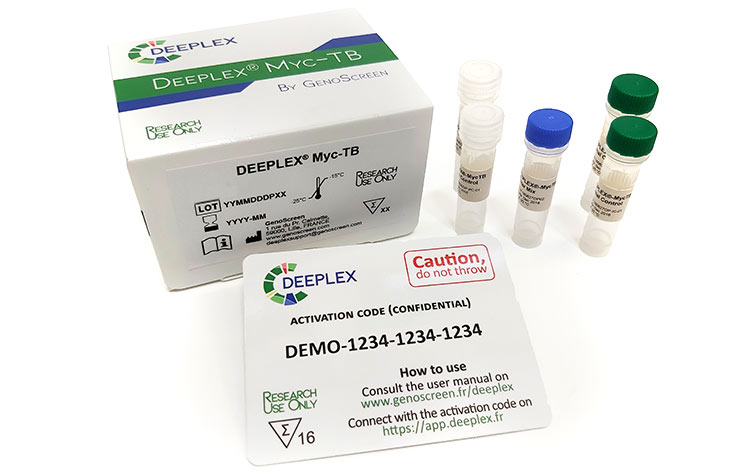
Illumina and Genoscreen Deeplex Myc-TB Combo Kit
This kit is a tNGS panel that identifies MTBC strains and mycobacterial species while providing a solution for genotyping and predicting drug resistance mutations for MTBC strains. This is a comprehensive, culture-free solution for characterizing TB drug resistance with fast results in less than 48 hours.
Learn MoreInterested in learning more about TB surveillance products?
Fill out the form below and we'll be in touch.Additional Resources
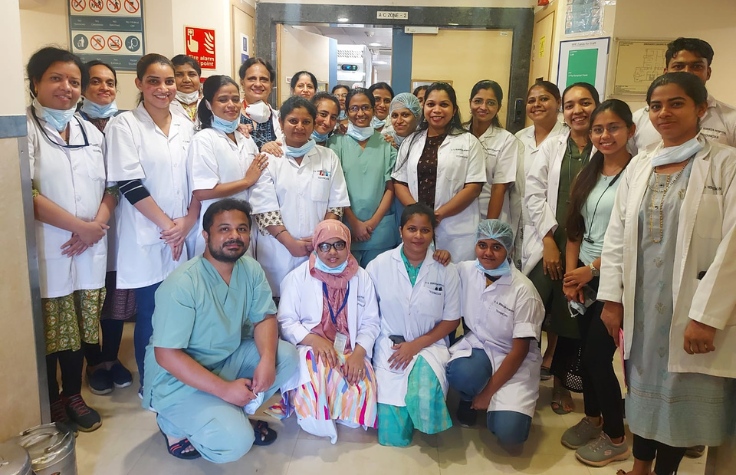
Genomics for tuberculosis surveillance in Mumbai
In this featured article, read how Dr. Camilla Rodrigues is using NGS to fight DR-TB at the P.D. Hinduja Hospital and Medical Research Centre in Mumbai, India.
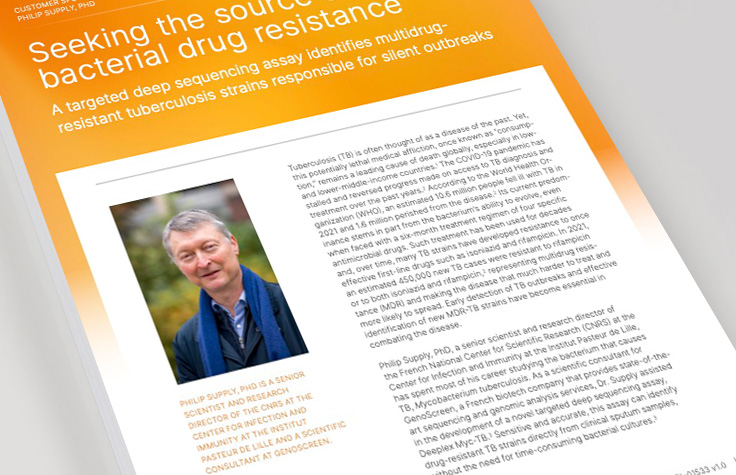
Seeking the source of bacterial drug resistance
Read the interview with Dr. Supply, who discusses the growing problem of DR-TB, the values that Illumina NGS systems bring to their detection, and more.

Fighting drug-resistant tuberculosis in South Africa
Read what the scientific lead at South Africa’s Centre for Tuberculosis in Johannesburg believes when it comes to detecting and tracking DR-TB using NGS.

Direct bacterial colony sequencing
Eliminate the need for separate DNA isolation and high-accuracy quantitation steps with the streamlined, cost-effective Flex Direct Colony Method.
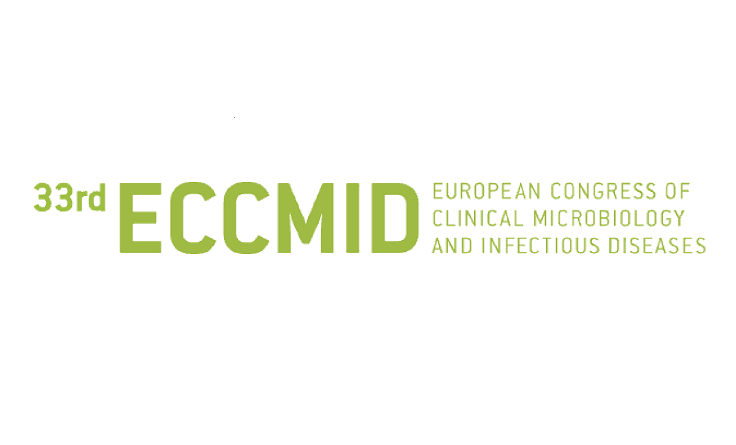
ECCMID 2023 video of Swapna Uplekar
In this talk, Dr. Swapna Uplekar, Senior Scientific Officer at FIND, Switzerland, shows how to enable targeted NGS for detection and diagnosis of drug-resistant tuberculosis.

From TB patient to advocate
Read the story about a former TB patient and how he turned his efforts to help others beat the second-leading infectious disease killer worldwide.
References
- Tuberculosis. who.int/news-room/fact-sheets/detail/tuberculosis. Accessed September 20, 2023.
- Castro RAD, Borrell S, Gagneux S. The within-host evolution of antimicrobial resistance in Mycobacterium tuberculosis. FEMS Microbiol Rev. 2021 Aug 17;45(4) doi: 10.1093/femsre/fuaa071
- The use of next-generation sequencing technologies for the detection of mutations associated with drug resistance in Mycobacterium tuberculosis complex: technical guide. Geneva: World Health Organization; 2018. iris.who.int/handle/10665/274443. Accessed September 21, 2023.
- Jouet A, Gaudin C, Badalato N, et al. Deep amplicon sequencing for culture-free prediction of susceptibility or resistance to 13 anti-tuberculous drugs. Eur Respir J. 2021 Mar 18;57(3):2002338. doi: 10.1183/13993003.02338-2020.
- Guidance for the surveillance of drug resistance in tuberculosis, sixth edition. Geneva: World Health Organization; 2020. iris.who.int/handle/10665/339760. Accessed September 21,2023.